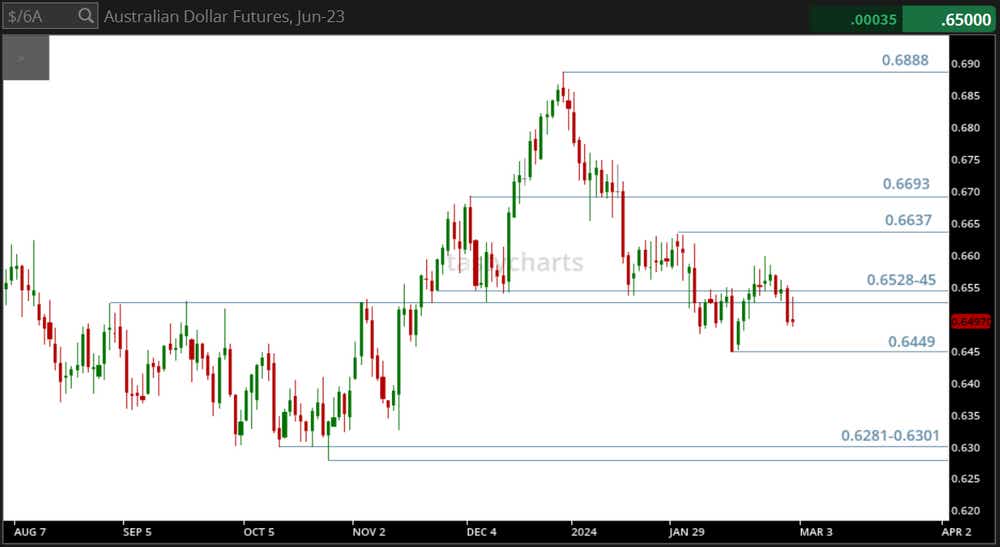
The Australian dollar looks set to fall as ISM and PMI data shows China continues to lag as U.S. growth holds up
- Chinese PMI data shows economic growth still struggling to lift off.
- U.S. ISM survey expected to signal service-driven expansion holding.
- Australian dollar likely to fall as U.S. vs. China divergence continues.
The economies of the United States and China have delivered increasingly diverging outcomes in the aftermath of the COVID-19 pandemic.
Incoming surveys of purchasing managers from the Institute of Supply Management (ISM) in the U.S. and the China Federation of Logistics and Purchasing (CFLP) are set to highlight as much again.
China still struggling as U.S. growth holds up
Experts expect the latest set of official purchasing manager index (PMI) readings from China to show that the world’s second-largest economy remains near standstill in February. Economic activity growth is seen slowing in the service sector while the pace of contraction accelerates on the manufacturing side of the equation.
Analytics from Citigroup suggest that Chinese economic data outcomes converged on baseline expectations in the fourth quarter of last year and remain pinned there. This implies that market-watchers’ models are well-tuned to actual economic conditions, so the PMI results seem unlikely to veer too far from the consensus view.

By contrast, ISM is set to report this week that U.S. manufacturing activity shrank at the slowest pace since the sector stopped growing in October 2022. Service-sector numbers due next week are seen showing a modest cool-off that nevertheless keeps growth near the four-month high set in January.
Upside surprises are also pointedly more likely on U.S. metrics than their Chinese counterparts. The same Citigroup statistics show that economic news-flow from the North American behemoth has increasingly overshot projections since the beginning of the year.

China’s anemic performance comes despite Beijing’s attempts at boosting policy stimulus to revive activity that is struggling to manage a return to pre-pandemic vigor. Meanwhile, the Federal Reserve looks set to begin cutting back interest rates this year, offering the already better-looking U.S. economy still more capacity to outperform.
Australian dollar: Trading China vs. U.S. economic trends
The Australian dollar offers a vehicle to trade this trend. The currency has tended to be sensitive to China’s business cycle because the East Asian giant is Australia’s largest trading partner. So, China’s outcomes have a significant impact on Australia’s growth, inflation, and interest-rate trends.
The currency has pointedly retreated after attempting to reclaim a foothold above the 0.66 figure against the U.S. dollar, with the 6A futures contact slipping back below the inflection zone in the 0.6528-45 area. That could set the stage to challenge recent swing lows near 0.6450. A break below that may clear the way for a climbdown toward 0.63.

Ilya Spivak, tastylive head of global macro, has 15 years of experience in trading strategy, and he specializes in identifying thematic moves in currencies, commodities, interest rates and equities. He hosts Macro Money and co-hosts Overtime, Monday-Thursday. @Ilyaspivak
For live daily programming, market news and commentary, visit #tastylive or the YouTube channels tastylive (for options traders), and tastyliveTrending for stocks, futures, forex & macro.
Trade with a better broker, open a tastytrade account today. tastylive, Inc. and tastytrade, Inc. are separate but affiliated companies.



